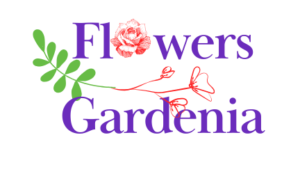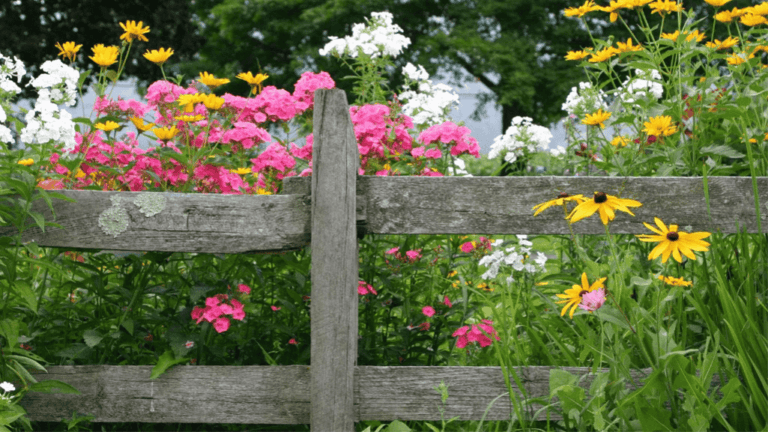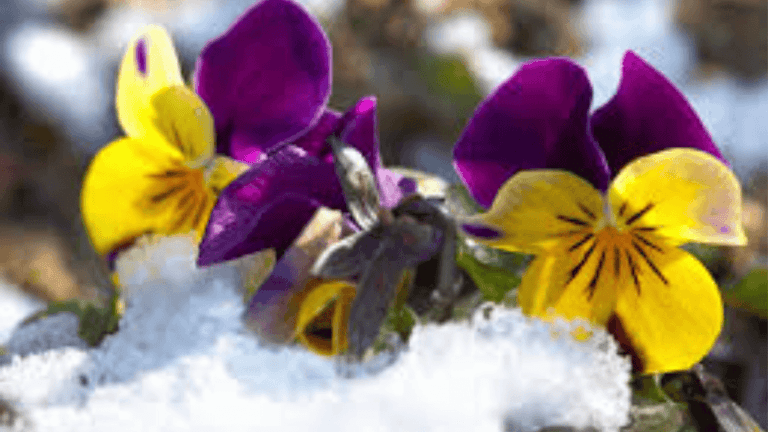Beautiful flowers gardenia Plants For Your homes

If you live in USDA hardiness zone 9, summer sun is intense, but cooler micro-sites let many shade loving perennials perform well.
This guide helps homeowners choose the right type and name-worthy perennials that give steady flowers and attractive leaves in a warm garden.
We cover groundcovers, shrubs, bold-leaved accents, and reliable border workhorses. Each entry notes mature feet and inches, light bands, and soil tips so you can match placement and avoid stress.
Make sure selections suit filtered light in your yard; many picks want bright, indirect sun to bloom in this climate.
Care themes repeat: enrich soil with organic matter, keep moisture even without waterlogging, and mulch to cool roots. Also check for spread issues or toxicity before planting near pets or kids.
Key Takeaways
- Choose perennials that match exact light and moisture conditions in your shade garden.
- Balance flowers and foliage to keep color across seasons.
- Note mature size in feet and inches when planning beds or containers.
- Improve soil and use mulch to protect roots from heat.
- Watch for invasive spread and keep toxic options away from children and pets.
What “shade” means in Zone 9 right now: partial shade, full shade, and dappled light
Shade isn’t one uniform condition; in warm areas it means anything from a few morning hours of sun to mottled woodland light.
Partial shade usually means roughly 3–6 hours of direct morning or filtered light. This exposure suits many perennials that need cooler afternoons to keep leaves and flowers from bleaching.
Full shade is fewer than 3 hours of direct sun. In hot climates, that brief sun window can make the difference between survival and scorch for delicate species.
A dappled canopy under tall trees gives shifting beams that help woodland types avoid leaf burn. North-facing walls, courtyards, and dense tree cover create cooler pockets that act like small microclimates.
- Track sun hours through the seasons; a few inches of moving shadow can change where a plant performs best.
- Reduce heat reflection from concrete or walls when moving items from full sun to partial full exposures.
- Group similar light-tolerant plants together for easier irrigation and consistent soil moisture.
“Test a few candidates before committing a bed; fading blooms often mean too much exposure.”
Tip: Windbreaks and structures can keep soil moist and protect root zones, improving success for shade gardens in hot areas.
Quick care keys for shade gardens in Zone 9
Focus on matching moisture and light to each plant’s needs. Some perennials prefer consistently moist soil, such as Astilbe, Camellia, Hydrangea, and Japanese Toad Lily. Others—like the succulent-like Foxtail “Fern”—need well-drained soil and infrequent watering.
Moist soil vs. well-drained: matching plants to irrigation and rainfall
Group species by their true water needs. Hostas and Elephant Ears favor slightly damp beds, while Foxtail “Fern” and similar types wilt with constant wet feet.
Make sure your irrigation matches exposure: sites with morning sun dry faster and may need extra water during heat waves. Watch leaves for stress—drooping shows thirst; yellowing can mean waterlogging.
Heat management: mulch, organic matter, and morning sun exposure
Build soil with compost and organic matter to hold moisture yet improve drainage. Apply 2–3 inches of mulch to buffer temperature, cut evaporation, and protect shallow roots.
- Favor morning light over harsh afternoon sun for best partial placements.
- Group like-watered plants for efficient drip or soaker irrigation.
- Fertilize lightly in spring to support steady growth without soft, heat-vulnerable foliage.
“Match irrigation to site and plant type; small adjustments prevent big losses.”
For a quick reference on suitable selections, see the guide to best shade garden plants.
Best groundcovers for a low-maintenance Zone 9 shade garden
Low-growing groundcovers can solve bare patches and cut maintenance in warm, filtered beds.
Creeping Jenny (Lysimachia nummularia)
Also known by the common name Moneywort, this mat forms bright chartreuse leaves. It grows about 2-4 inches tall and 12-18 inches wide and shows tiny yellow flowers in spring.
Tip: Use containers or edges to limit spread, as some forms can be invasive.
Periwinkle (Vinca minor)
Vinca makes a trailing carpet 3-6 inches tall with vines up to 1.5 feet wide. It blooms lavender to white flowers in spring and thrives in partial shade.
Japanese Pachysandra (Pachysandra terminalis)
This evergreen groundcover tolerates partial to full shade and offers spring white flowers. Check local rules before planting—it’s invasive in some states.
Bugleweed (Ajuga)
Ajuga grows 6-9 inches tall, spreads by stolons, and produces violet flower spikes. It provides fast cover but can escape beds; Maryland, Oregon, and West Virginia list invasiveness concerns.
“Space groundcovers to their mature inches wide or feet wide spread to minimize weeding and mulch needs.”
- Improve soil with compost before planting for quick establishment.
- Combine textures—round Moneywort leaves, glossy Pachysandra, and Ajuga rosettes—for year-round interest.
- Use root barriers where spread must be controlled near paths or lawns.
Flowering shrubs that thrive in partial shade
Shrubs with dependable blooms make great backbones for filtered-light gardens. Use them as mid- to back-row anchors to support smaller perennials and add season-long interest.
Camellia (Camellia japonica) — A broadleaf evergreen with glossy leaves and long-lasting pink, red, or white flowers. This shrub grows about 6–12 feet tall with a similar spread. Plant Camellia in partial shade and moist soil, and space specimens at least five feet apart for good airflow.
Hydrangea (Hydrangea spp.) — Choose types depending on variety; some tolerate more sun, others prefer filtered light. Hydrangeas can reach up to 15 feet tall in generous sites and often add roughly 24 inches of growth per year. Improve soil with organic matter and fertilize in spring for bigger flower heads.
Flowering Quince — Also known by its common name, this thorny shrub offers fragrant pink, red, orange, or white blooms and edible fruit. Many forms stay compact (about 2–3 feet tall with 6-inch spreads) and can be trained on a trellis or as a hedge for tight spots.
- Planting tip: Group shrubs with similar moisture needs so irrigation stays uniform.
- Maintenance: Prune after bloom to protect next season’s buds on types that bloom on old wood.
- Use: Place these shrubs behind perennials, leaving several feet for maintenance access.
“One easiest strategy is to match water needs and light tolerance when grouping shrubs.”
Bold foliage for dramatic texture in shade
Big leaves and vivid color can be the focal point of a filtered-light bed. Use architectural forms to add depth and contrast when flowers are sparse.
Elephant Ears
Elephant Ears offer huge leaves that read like sculpture in partial to full shade. Most cultivars love heat and humidity and need evenly moist soil to perform.
They can reach several feet tall and span feet wide in rich beds. Note: they are toxic to pets and people, so site them away from play areas.
Croton
Croton is valued for colorful leaves and works best in bright, filtered light rather than full sun. High humidity sharpens its tones.
Place this type as a foliage focal point and protect it from harsh afternoon exposure. Handle with care—Croton is toxic if eaten.
Foxtail “Fern” (Asparagus densiflorus)
Foxtail “Fern” brings a fine, feathery texture and produces tiny white flowers and red berries in spring. It grows about 2–3 feet tall and feet wide.
Water only when the top three inches of soil are dry to avoid rot. Like the others, this name is commonly used with a toxicity warning for homes with kids or pets.
- Combine coarse leaves with fine textures for year-round interest.
- Allow adequate spacing so large-leafed choices don’t crowd paths.
- Improve soil with compost and mulch to keep moisture steady in warm gardens.
Flower-forward perennials for spring to early summer color
Flower-forward perennials deliver a steady run of color when matched to light and moisture in warm filtered sites.
Bleeding Heart
Bleeding Heart shows arching stems of heart-shaped blooms in spring and grows up to 3 feet tall and wide. Give it partial to full shade and rich, cool soil; note the name is linked to toxicity, so keep it away from children and pets.
Astilbe (False Goat’s Beard)
Astilbe thrives in moist soil and filtered light. Its plume-shaped flowers come in pink, red, or white and carry color into early summer. One easiest way to succeed is steady moisture and organic mulch.
Japanese Toad Lily
This late-blooming option reaches 2–3 feet tall and 1–2 feet wide. It produces purple-speckled white flowers in late season. Protect tall stems from wind and keep the soil evenly moist for best bloom time.
Lenten Rose and Coral Bells
Lenten Rose blooms around Lent and sits at about 12–18 inches tall and wide, offering early spring color and tough leaves.
Coral Bells top out near 18 inches tall and ~15 inches wide. Their colorful leaves pair well with white-to-red flower spikes; deadhead to encourage repeat blooms.
- Stagger bloom time across these perennials to keep continuous flowers from spring early summer into late season interest.
- Combine textures—fernlike Astilbe with bold Hellebore leaves—to enrich borders without overplanting.
- Confirm toxicity for Bleeding Heart and site accordingly in family gardens.
“Group by moisture and height so each plant type can perform without stress.”
Reliable border and edging plants for partial shade
Edging choices can make or break a border; pick durable, tidy types that hold form under filtered light. These selections create a clear line between path and bed while offering color and texture through spring and summer.
Hosta (Plantain Lily)
Hosta grows 6-48 inches tall and can spread up to 6 feet wide in rich, moist soil. It prefers partial to full shade and provides broad leaves that read like living edging.
Note: Hostas are toxic to pets, so site them away from play areas. Divide clumps every few years to refresh vigor.
Lilyturf (Liriope)
Liriope makes grassy clumps about 12-18 inches tall and 9-12 inches wide. It sends lavender flower spikes and is commonly used along paths and in mixed containers.
It’s a slow spreader and tolerates many conditions, but avoid overwatering to prevent crown rot.
Pig Squeak (Bergenia)
Bergenia grows about 1-2 feet tall and roughly the same feet wide. Large, glossy leaves and pink to white flowers brighten edges in spring.
Keep soil evenly moist and deadhead spent blooms to encourage more flowers. Mix these types to combine broad leaves, grassy texture, and leathery foliage for year-round structure.
“Space to mature sizes to reduce future division and keep borders tidy.”
- Space to mature inches wide and feet wide to avoid crowding.
- Improve drainage where water pools to protect crowns and roots.
- Divide clumps every few years to maintain neat growth habits.
Ornamental grasses and grass-like picks for dappled or partial shade
Ornamental grasses can add soft movement and vertical rhythm to a filtered-light border. One top name for cool, airy seedheads is Northern Sea Oats (Chasmanthium latifolium).
Northern Sea Oats grows about 2–3 feet tall and wide and shows bluish-green leaves that fade to pale green with attractive seedheads. It tolerates partial shade to full sun, depending variety and site exposure.
Be careful in warmer areas zone where this plant type spreads by rhizomes and can become aggressive. Many gardeners use large containers to limit spread while keeping the dramatic seedheads on show.
- Use: place behind low perennials to add motion and contrast among broad leaves.
- Soil: plant in amended soil for quick establishment and denser clumps under dappled light.
- Care: cut back old stems in late winter and monitor self-seeding to remove unwanted seedlings early.
“A controlled clump of Northern Sea Oats brings texture and gentle movement to a mixed garden.”
Ground reality in the U.S.: invasiveness and toxicity notes
Before you plant, know which common garden selections can spread fast or pose a risk to pets and children.
Watch these spread-prone types. Bugleweed (Ajuga) is invasive in Maryland, Oregon, and West Virginia. Japanese Pachysandra (Pachysandra terminalis) is listed in some states. Northern Sea Oats can spread by rhizomes and self-seeding in warm areas.
Containment and monitoring
- Identify spread-prone choices: Ajuga, Pachysandra, and Northern Sea Oats can outcompete neighbors where plants grow aggressively.
- Use containers, edging, or root barriers to confine stolons and rhizomes.
- Check state and county invasive lists before buying and remove seedlings promptly.
Toxicity reminders
Some perennials carry real risks. Bleeding Heart, Croton, Hostas, Foxtail “fern,” and Elephant Ears are toxic to people or animals. Wear gloves when handling sap, and dispose of prunings securely.
“Document the plant name and common name on tags so household members know risks.”
- Manage soil disturbance and mulch gaps; these accelerate spread.
- Favor sterile cultivars or native alternatives in sensitive sites.
Zone 9 shade plants: top picks by space and size
Layering textures and heights helps small containers and wide borders look full without crowding. Match each selection to mature inches and feet so beds stay balanced as growth fills in.
Small spaces and containers
Heuchera reaches up to 18 inches tall and 15 inches wide and loves partial full light and well-drained soil. Liriope grows 12–18 inches tall and 9–12 inches wide, making a grassy edge in pots.
Creeping Jenny stays 2–4 inches tall with 12–18 inches wide runners and suits tight corners or hanging containers.
Medium beds
Combine Astilbe (6–24 inches tall), Lenten Rose (12–18 inches tall/wide), Bergenia (1–2 feet tall/wide), and Periwinkle (3–6 inches tall with 18-inch vines) for layered foliage and early flowers.
Backdrops and screens
Use Camellia (6–12 feet), Hydrangea (up to 15 feet depending variety), and broad-leaved Elephant Ears as a shade full backdrop. Plan spacing to feet wide and inches wide mature sizes to ease maintenance.
- Tip: Match exposure—best partial or deeper shade—to each plant’s need.
- Prep soil: well-drained but moisture-retentive mixes help roots establish.
- Vary leaves and bloom times so the garden shows interest between flowers.
Where to buy and how to choose varieties in the United States
Find reliable vendors and clear selection rules so your filtered-light beds start well and stay healthy.
Start local, then widen your search. Many national nurseries ship hardy perennials and name cultivars to U.S. addresses. Check reviews and return policies before ordering.
Match plant type to light
Filter listings for partial shade full, partial full shade, or full sun tolerant picks. Pick types that match your microclimate to avoid transplant shock.
Read tags and product notes
- Check bloom time and bloom color to schedule flowers across seasons.
- Confirm inches tall, feet tall, inches wide, and feet wide so mature size fits beds.
- Look for USDA zone compatibility and notes like depending variety on Hydrangeas and others.
- Compare soil and moisture needs—make sure Astilbe or Camellia get moist soil; Foxtail “Fern” prefers well-drained mixes.
“Buy healthy roots, not just a pretty top; firm, white roots establish faster.”
Also verify toxicity, invasiveness, and disease resistance. Pick trusted suppliers and healthy stock to speed establishment and long-term success in your garden.
Conclusion
Use simple sketches to match bloom time and mature inches so beds age gracefully.
Plan by exposure: map from full shade to partial shade full transitions and place tall, feet tall anchors like Camellia or Hydrangea at the back. Reserve front edges for compact choices measured in inches tall.
Stagger bloom time from spring early to spring early summer, then let late bloomers such as Japanese Toad Lily finish the season. Combine white flowers and yellow flowers, and pick forms depending variety to keep color steady.
Confirm common name and cultivar, note toxicity (bleeding heart, Hostas), and monitor where plants grow. Improve soil and mulch to protect leaves and roots through long warm months.
Action: choose one groundcover, one perennial, and one shrub to start a cohesive, low-maintenance shade garden that thrives.



















